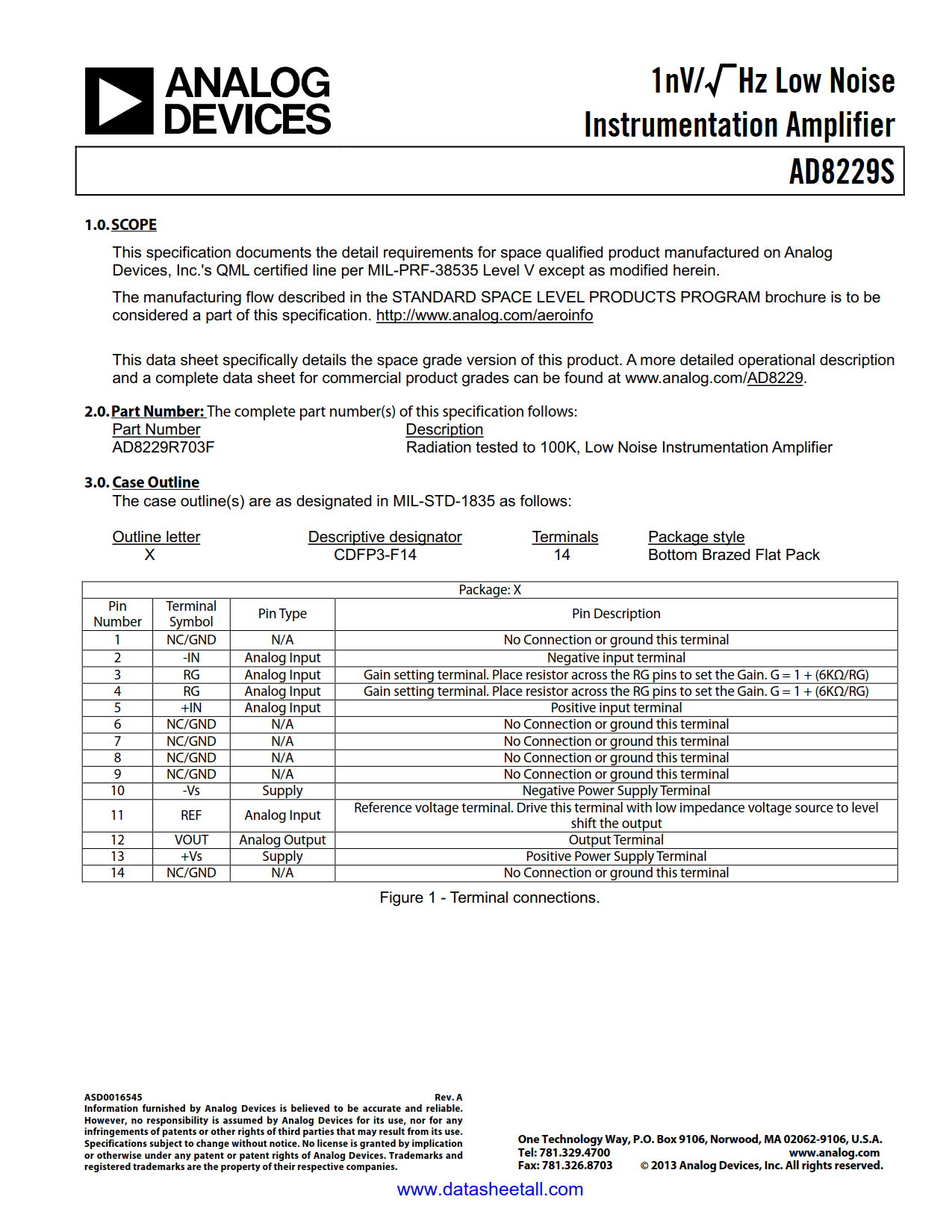
AD8229S Datasheet
Aerospace 1 nV/√Hz Low Noise Instrumentation Amplifier

Aerospace 1 nV/√Hz Low Noise Instrumentation Amplifier
| Part No. | In Stock | Price | Packaging | SPQ | Marking | MSL | Pins | Temp Range | Package Description |
| 5962L1420502VXA | 0 | $0 | Tube | 18 | 1 | 14 | -55°C ~ 125°C | 14-Lead FlatPack | |
| 5962R1420501VXA | 0 | $0 | Tube | 18 | 1 | 14 | -55°C ~ 125°C | 14-Lead FlatPack | |
| AD8229AF-EMX | 0 | $0 | Box | 18 | 1 | 14 | 0°C ~ 70°C | 14-Lead FlatPack |
The AD8229 is an ultralow noise instrumentation amplifier designed for measuring small signals in the presence of large common-mode voltages and high temperatures.
The AD8229 has been designed for high temperature operation. The process is dielectrically isolated to avoid leakage currents at high temperatures. The design architecture was chosen to compensate for the low VBE voltages at high temperatures.
The AD8229 excels at measuring tiny signals. It delivers industry leading 1 nV/√Hz input noise performance. The high CMRR of the AD8229 prevents unwanted signals from corrupting the acquisition. The CMRR increases as the gain increases, offering high rejection when it is most needed.
The AD8229 is one of the fastest instrumentation amplifiers available. Its current feedback architecture provides high bandwidth at high gain, for example, 1.2 MHz at G = 100. The design includes circuitry to improve settling time after large input voltage transients. The AD8229 was designed for excellent distortion performance, allowing use in demanding applications such as vibration analysis.
Gain is set from 1 to 1000 with a single resistor. A reference pin allows the user to offset the output voltage. This feature can be useful when interfacing with analog-to-digital converters.